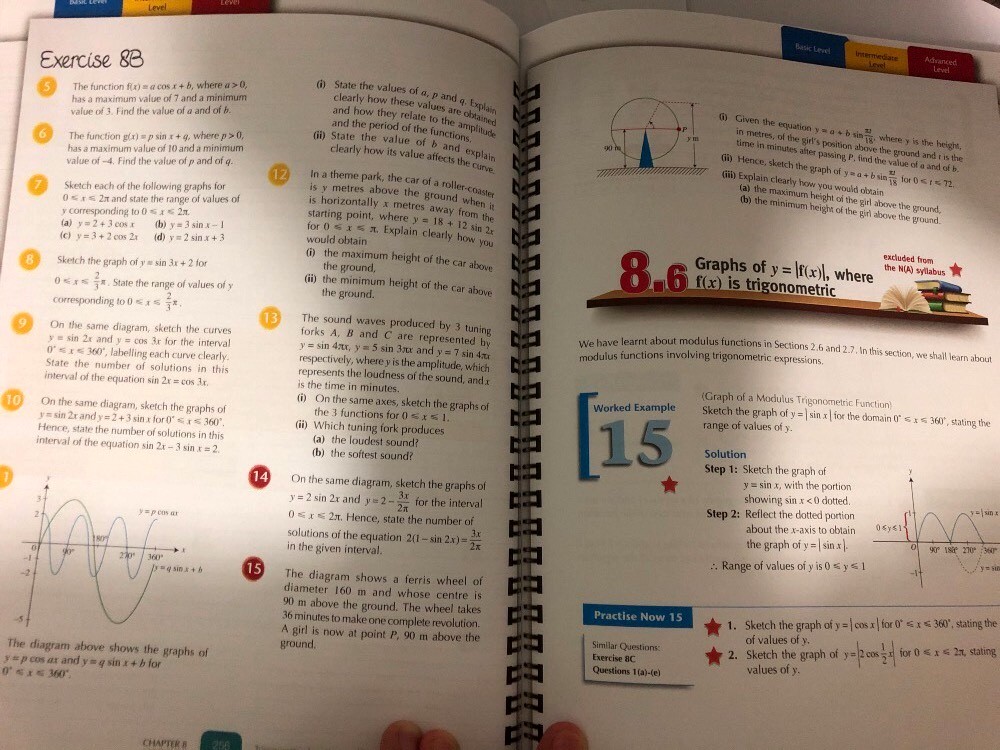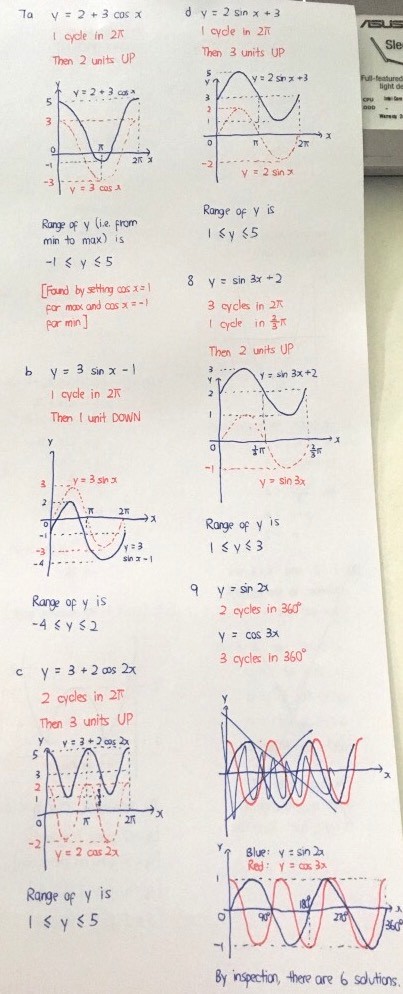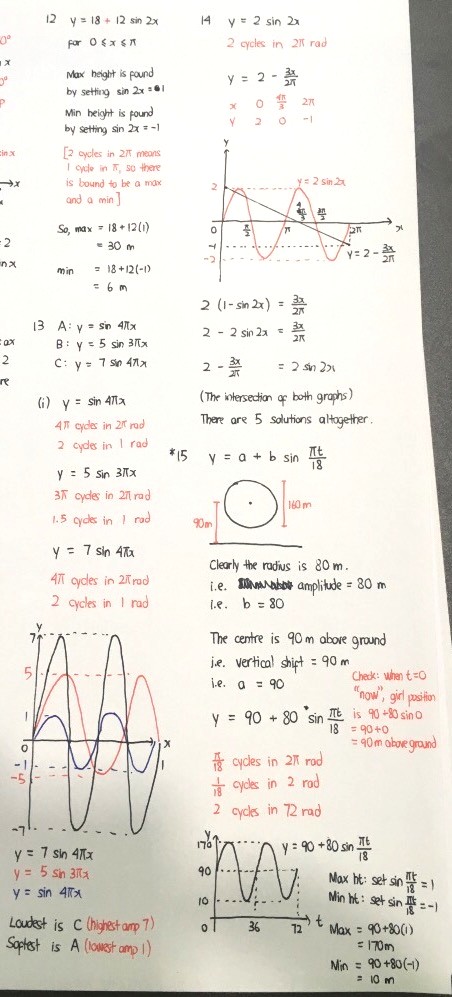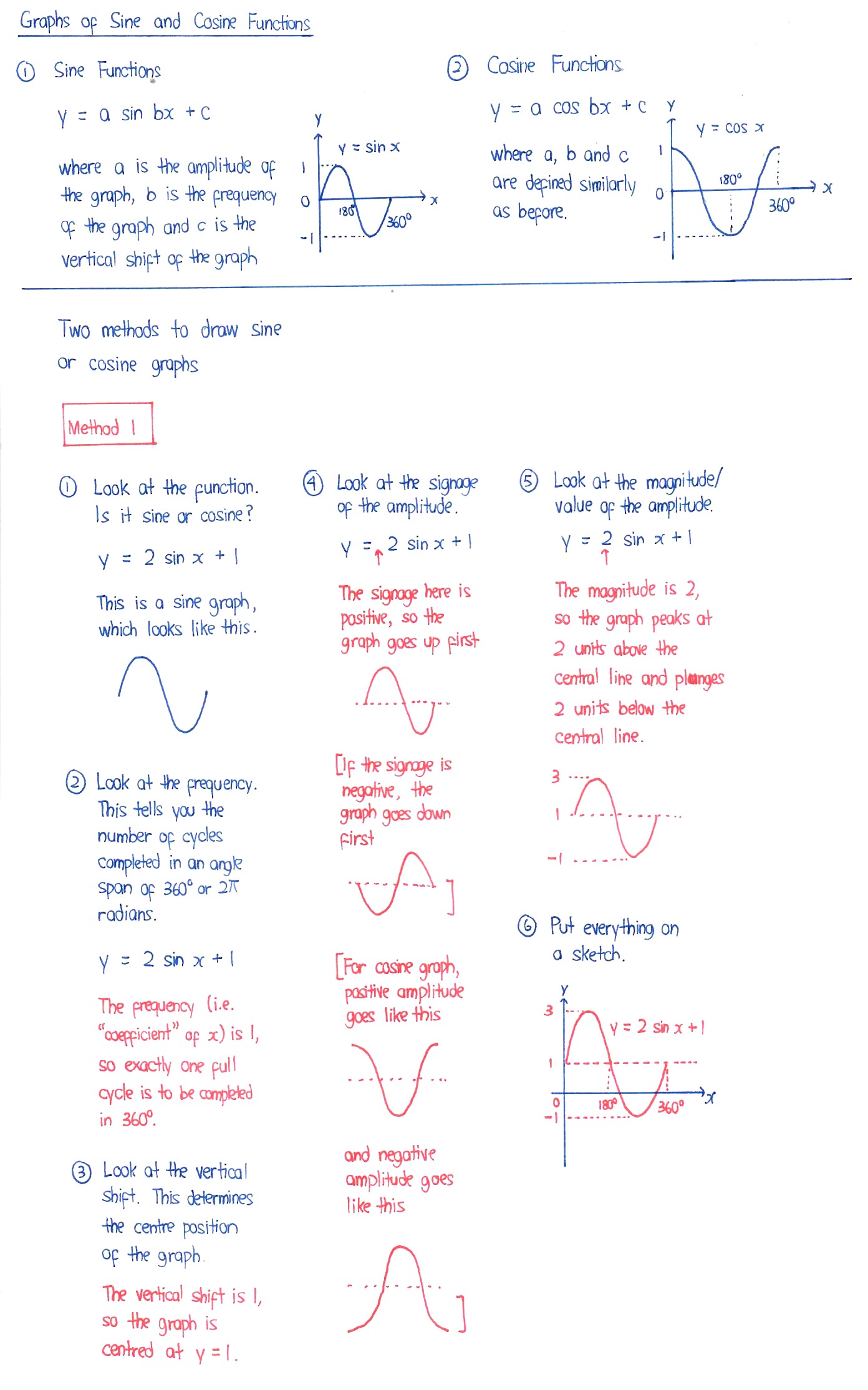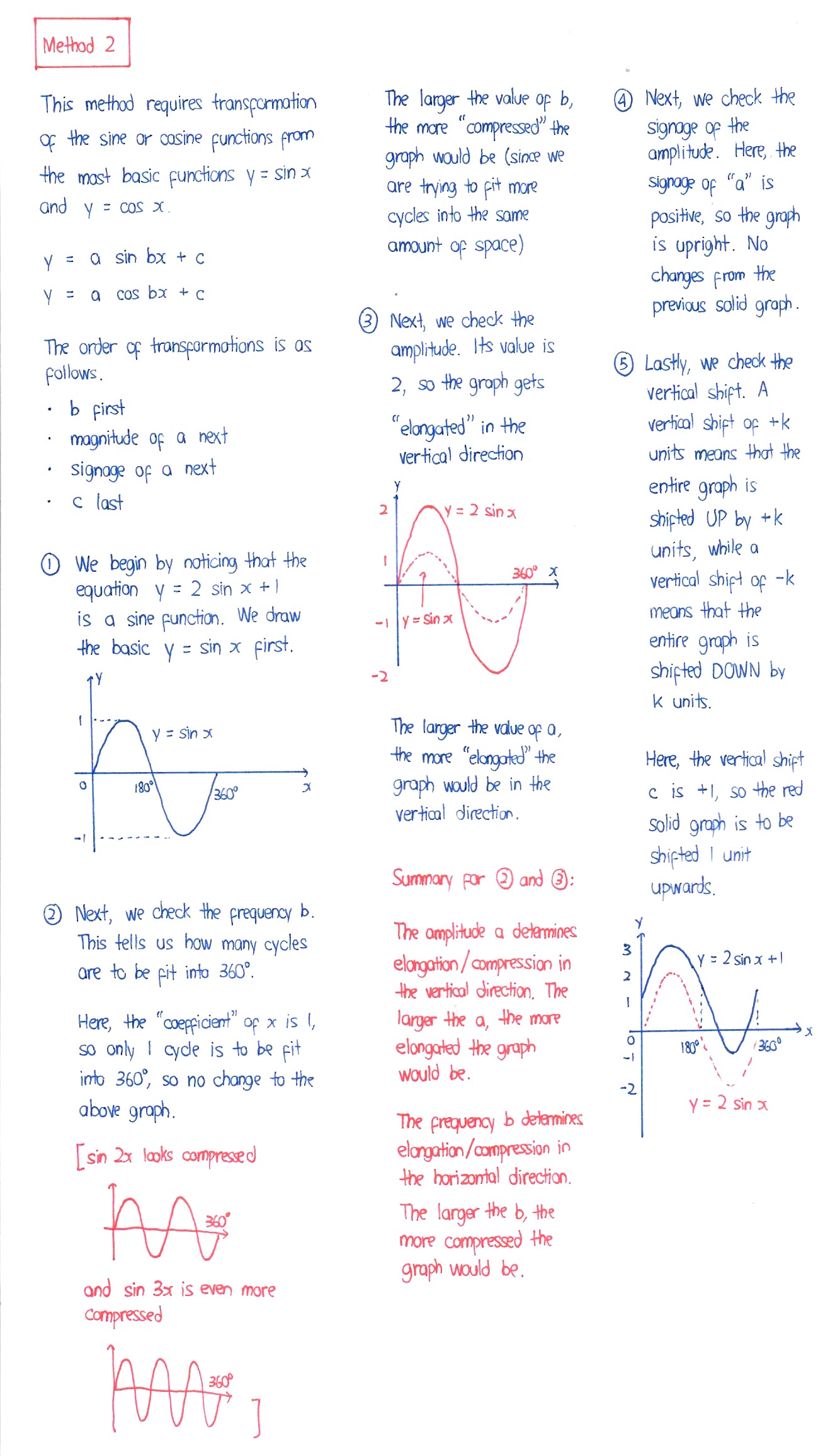Ask Singapore Homework?
Upload a photo of a Singapore homework and someone will email you the solution for free.

See 7 Answers
done
{{ upvoteCount }} Upvotes
clear
{{ downvoteCount * -1 }} Downvotes
Q5, Q6
Date Posted:
5 years ago
done
{{ upvoteCount }} Upvotes
clear
{{ downvoteCount * -1 }} Downvotes
Q7a to Q9
Will do the rest when I have more time.
Will do the rest when I have more time.
Date Posted:
5 years ago
Ok. You can see the qns right?
Yes, including the next page’s bottom right questions. Will do up the techniques of Trigo graph drawing if I can still remember and when I have time.
ok thank you so much
Can I know what is UP?
Why u use red and blue pan draw?
Why u use red and blue pan draw?
I will give you a preview of the notes. The vertical shift determines whether the graph is shifted up or down from The Central position.
Done! Sending up the two methods soon.
Kathy, take a look at the two different methods. I will now take a short break and once done, I will redo questions 2a to 2e (in the other post) using both methods for you to have familiarity. From there you will decide which method you prefer.
As for graphs of tangent functions, you can just read from the book - very few things to note for such graphs).
As for graphs of tangent functions, you can just read from the book - very few things to note for such graphs).
I draw in red and blue to show you the graphs.
The dotted graph is just a working graph without any vertical shift.
The blue graph is the actual graph as required in the question after shifting the red graph by the value c.
The dotted graph is just a working graph without any vertical shift.
The blue graph is the actual graph as required in the question after shifting the red graph by the value c.
Ok
Thanks
Thanks
I will do one random example next.
done
{{ upvoteCount }} Upvotes
clear
{{ downvoteCount * -1 }} Downvotes
Q10 and Q11
Date Posted:
5 years ago
Tonight u free?
Writing some of the questions up but I am still outside, so I will just write up a few questions until I run out of the page space before continuing tonight at 11 pm.
Ok
done
{{ upvoteCount }} Upvotes
clear
{{ downvoteCount * -1 }} Downvotes
Q12 to Q15
Date Posted:
5 years ago
done
{{ upvoteCount }} Upvotes
clear
{{ downvoteCount * -1 }} Downvotes
Done. You can continue to post questions and I will look at it tonight.
Date Posted:
5 years ago
Q1 range of values is -1 <= y <= 1
Q2 range of values is -2 <= y <= 2
Q2 range of values is -2 <= y <= 2
done
{{ upvoteCount }} Upvotes
clear
{{ downvoteCount * -1 }} Downvotes
Here is the first method to draw a sine or cosine graph.
This method requires you to find
1. the number of cycles of the graph
2. the centre value
3. the max and min value
4. the direction of the graph (which way it goes from the start).
This method requires you to find
1. the number of cycles of the graph
2. the centre value
3. the max and min value
4. the direction of the graph (which way it goes from the start).
Date Posted:
5 years ago
done
{{ upvoteCount }} Upvotes
clear
{{ downvoteCount * -1 }} Downvotes
Here is the second method of drawing graph.
This method requires transformation from the most basic graph y = sin x or y = cos x.
We need to do the transformations in this order.
1. The frequency
2. The magnitude of the amplitude
3. The signage of the amplitude
4. The vertical shift is always LAST
We must draw the graphs in each stage from 1 to 4 (plus the starting graph y = sin x or y = cos x) for a total of 5 graphs.
This transformation method is particularly useful in future studies (especially in the A Levels if you are taking A Levels).
This method requires transformation from the most basic graph y = sin x or y = cos x.
We need to do the transformations in this order.
1. The frequency
2. The magnitude of the amplitude
3. The signage of the amplitude
4. The vertical shift is always LAST
We must draw the graphs in each stage from 1 to 4 (plus the starting graph y = sin x or y = cos x) for a total of 5 graphs.
This transformation method is particularly useful in future studies (especially in the A Levels if you are taking A Levels).
Date Posted:
5 years ago
Just sin and cosine?
The most common are sine and cosine. Tangent is very easy to remember (you only need to remember the number of cycles).

